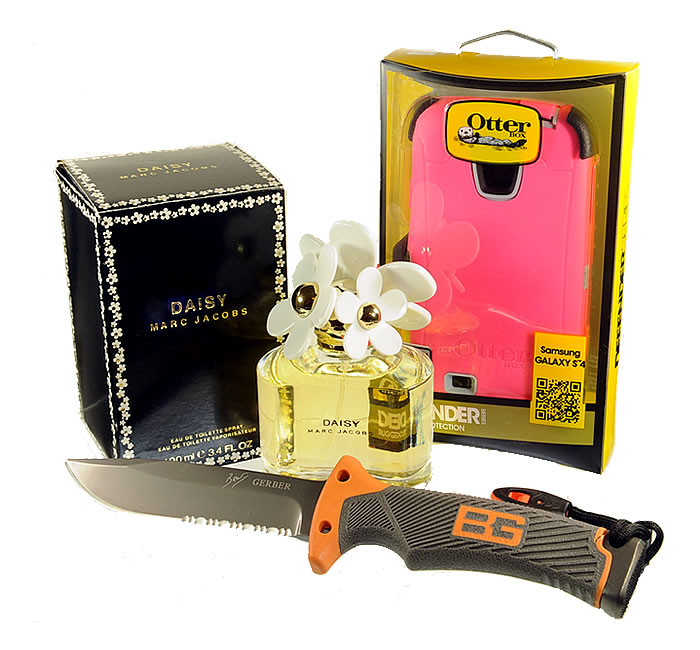Consumers Are Easily Deceived By Counterfeit Products
Photos help consumers identify counterfeit products
August 27, 2013, Los Angeles, CA – Consumers are being easily fooled by a global avalanche of counterfeit products. While most consumers are familiar with counterfeit Rolex watches and Coach Handbags, the exploding counterfeit product industry is producing thousands of counterfeit products the average consumer wouldn't even suspect. How does a consumer protect themselves and identify the billions of dollars of counterfeit products flooding the market -- from auto parts and fashion accessories, to pet supplies and sporting goods?
Could you identify these counterfeit products?

(photo credit: The Counterfeit Report) » media photo link
The Counterfeit Report (theCounterfeitReport.com) website offers consumers a free and informative visual guide to identify counterfeit products. The website shows everyday items that consumers wouldn't suspect are counterfeit; Colgate Toothpaste, Duracell Batteries and Gillette Razor Blades, and unusual specialty items like Bear Grylls Hunting Knifes, Otterbox cell phone cases and a variety of perfumes and colognes. If "a picture is worth 1000 words" the website certainly holds this true by helping consumers identify counterfeit products with photo examples of counterfeit products. In addition to seeing and learning about counterfeit products, consumers can also report counterfeit items to the manufacturer right on the website.
"The Counterfeit Report is actually showing the consumer the sophistication of counterfeiters and their ability to create visually identical counterfeit products. Consumer awareness is only part of the global solution. Counterfeited products are very deceptive, and consumers often unknowingly purchase hazardous or deadly products. If it's manufactured, it's probably counterfeited, and will likely fool you" says founder Craig Crosby.
The first and only website of its kind, The Counterfeit Report® allows manufacturers to immediately update counterfeit product information in a central location to help consumers instantly identify counterfeit or fake products. However, the anti-counterfeiting effort is more than protecting a trademark or brand, it is also protecting consumers from unsafe and potentially deadly products and medications.
Counterfeit statistics are staggering. Online retail giants eBay and Amazon, while conveying a sense of credibility to consumers, are swamped with counterfeit products. China websites freely and openly advertise counterfeit trademarked products while encouraging viewers to resell the counterfeits as a money making business. These products then make their way to secondary retailers, eBay, Amazon, swap meets and websites who often promote them as "genuine" or "100% authentic" then disappear after the sale.
And money making it is; counterfeiting is a $700 billion enterprise with the profits going to organized crime and terrorists says the United Nations Office on Drugs and Crime ("UNODC"). While consumer purchases are supporting criminals, the criminals also avoid taxes, destroy an estimated 750,000 US jobs, and cost US businesses over $250 Billion annually. Illegal counterfeiting activity is profitable, difficult to track and widely unpunished.
The counterfeit marketplace is extensive. Industry experts estimate up to 40% of online prescriptions and 80% of razor blades are counterfeit. Gillette recently seized over 1 million razor blades in China in just one week. The FAA estimates that over 500,000 aircraft parts are installed in aircraft each year, with potentially catastrophic results, and the US military is detecting a huge influx of counterfeit parts that are putting our troops at risk.
While we all recognize the tough economic times, greed is driving the proliferation of counterfeit products and the consumer is getting stung by these poor quality, substandard, and unsafe counterfeit products and medications. Many counterfeit products are identified when they are returned to the manufacturer for warranty repairs, leaving the consumer out their investment and without a product. "It's the consumer who ultimately gets hurt and in some cases, fake can be fatal" concluded Crosby.
Website: www.theCounterfeitReport.com
 |